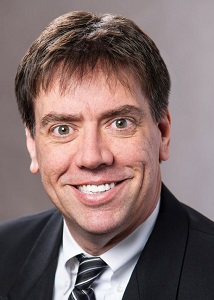To Hear The Voice of the Patient, Create An Advocacy Department
By Ed Miseta, Chief Editor, Clinical Leader
 When Lori Abrams was selected to be the head of advocacy, diversity and patient engagement for Global Development Operations at BMS, she took over a department that did not exist. She had to build the department and recruit personnel to form a group that would ensure the voice of the patient is included in the design and execution of trials. Abrams agreed to speak with me about some of the lessons she has learned
When Lori Abrams was selected to be the head of advocacy, diversity and patient engagement for Global Development Operations at BMS, she took over a department that did not exist. She had to build the department and recruit personnel to form a group that would ensure the voice of the patient is included in the design and execution of trials. Abrams agreed to speak with me about some of the lessons she has learned
Miseta: Tell us something that someone not involved with patient advocacy might be surprised to learn?
 Lori Abrams: When given the opportunity, many patients and/or their caregivers are highly motivated to help us learn about their disease, life challenges and journey. They are willing to share very personal stories that illustrate their day-to-day fears, obstacles and dreams. They understand and even demand that we design and execute a clinical trial that is more patient-friendly with their cooperation.
Lori Abrams: When given the opportunity, many patients and/or their caregivers are highly motivated to help us learn about their disease, life challenges and journey. They are willing to share very personal stories that illustrate their day-to-day fears, obstacles and dreams. They understand and even demand that we design and execute a clinical trial that is more patient-friendly with their cooperation.
Miseta: Your group (Advocacy, Diversity & Patient Engagement) covers discovery through all three phases of the clinical trials process. Are there different challenges you face in each phase?
Abrams: There are different challenges that we face, specifically in the early space. The diseases and assets are often new to the company. Thus, we have to learn about them quickly, given there is often no predecessor. It is even more essential to partner with patients and advocacy groups to help us learn about these new diseases, understand the challenges and burdens faced by the patients and their caregivers, identify and brainstorm with the key advocacy groups and thought leaders, and ultimately include the patient into the design and execution of our development plan.
By the time we get to Phase III and beyond, we have learned a great deal through our advocacy efforts. This does not mean we stop collaborating with advocacy groups, we just modify our tactics.
Miseta: What kind of things can you learn in the discovery phase that will be helpful to you in the development phase?
Abrams: Ultimately, any lessons learned will be transferred to the next study. While this concept is not new, giving patients and caregivers a voice, can help us shape subsequent trials.
Our job is to make sure his or her experience is shared with the clinical study team, so changes can be made prior to going into development. Some of the things we can learn are: Is it too challenging to travel frequently for study visits? Can we make alternative arrangements? Are the diagnostic tests too invasive? Are we asking for too many blood draws? Is the study too complicated for the site personnel or study subjects?
The physicians performing the trials might know how many study visits were required, or the feasibility of the eligibility criteria. But that doesn’t mean they understand what that burden was like from the patient’s perspective. This is something we focus on to improve the experience for all patients.
Miseta: Some companies have patient advocacy groups at a high level, but not specifically for clinical trials. Your group may be one of the first to bring it to this level. Why is this type of effort not more common in pharma? Is there something holding back the effort?
Abrams: I think that several other companies have ongoing advocacy initiatives in the early and development space, but I cannot speak to whether they have formal departments. While I can’t specifically answer why others’ make decisions about forming teams like ours, from experience I can extrapolate the following:
Allocating people resources and garnering support from the highest levels of a company is essential for an advocacy team in clinical trials to succeed. Identifying an individual with experience and/or passion is fairly easy. Coupling that with influencers who have strong relationship-building skills and who understand the business and bring credibility to the role, is not as easy. But it’s important to keep in mind that these changes will not happen overnight. For a long time, this type of effort was non-existent in the clinical space. Bringing advocacy into the clinical trials space is a cultural change.
Miseta: What is one critical piece of advice you would give to someone attempting to kick off this type of effort?
Abrams: There has to be high-level support from the top echelons of the company. Management needs to be on board helping to drive that cultural change throughout the company. One of my goals is to have a seat at the table for every discussion involving the design of a trial. Without the support of management, it would be difficult to make that happen.
Additionally, success factors, both qualitative and quantitative, need to be agreed upon early in program’s development. Trying to move forward with the effort, not having defined what you’re trying to achieve and what that success will look like, will make the effort substantially more difficult.
Miseta: Someone setting up a group like this might wonder what chores the members of your team are tasked with on a daily basis. Can you provide some insight?
Abrams: Sure. Most of my time is spent working with both internal and external stakeholders and participating in external advocacy and/or diversity work streams. The members of my team spend their time:
1.Working with clinical teams to understand where an Advocacy intervention may bring the most value
2.Identifying, evaluating and engaging external Advocacy groups and community organizations in conversation around needs related to clinical trials
3.Developing and implementing strategies and tactics based on data synthesis and analysis, from Big data, to Ad Boards, to individual experience
4.Communicating with internal and external stakeholders to refine and execute Advocacy plans
Needless to say, there is a lot involved with this effort, but all of it will create a much better experience for the patient, which has always been our overriding goal.
